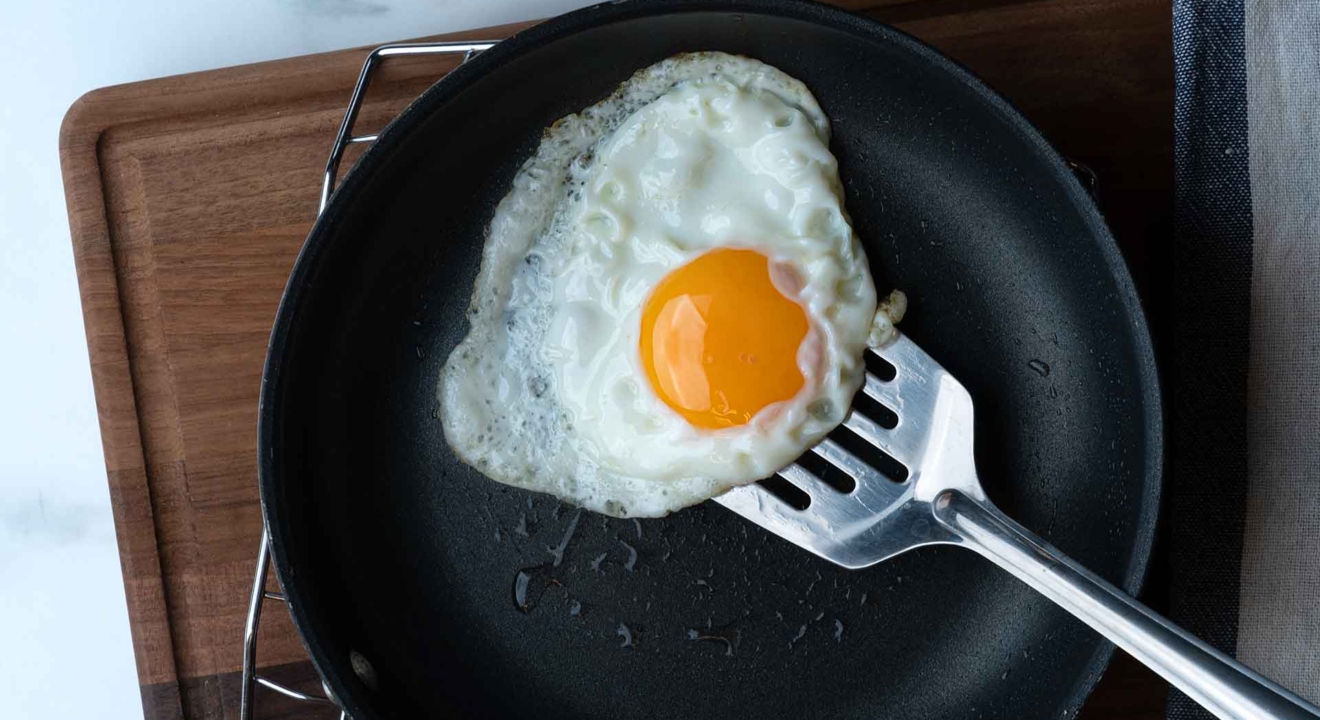The secret to a perfect fried egg
ARGIRO BARBARIGOU

So simple to make, but honestly, how many times have they turned out the way they should be served?
Success in this recipe starts with the right cooking temperature. We want the egg cooked through, but the yolk not set. The yolk should be runny and moist, not firm or stabilized.
As simple as it sounds, it’s not quite as easy as it seems.
The whites are more watery and spread out in the pan, cooking faster than the rich, denser yolk.
Also, to achieve a slightly crispy texture on the bottom without burning the white, the fat the olive oil, butter (or a mix) must be hot enough to form a light crust with a crisp, airy texture.
The pan used for fried eggs matters. Not so much the quality of the pan, but its size.
If you want to cook one or two eggs, you need a small pan. A large one will cause the eggs to spread out too much, cooking too fast at the edges because the oil won’t cover the surface properly.
Oil or butter for fried eggs?
It’s purely a matter of taste and preference. In fact, a small amount of both gives perfect flavor.
But the butter’s temperature is important. It should go in as cold pieces into hot oil so the proteins don’t burn. The eggs shouldn’t swim in fat. Two to three tablespoons is enough for two eggs.
How to make the best fried eggs
Heat a small nonstick pan, preferably 20–22 cm, over medium-high heat. Once hot, add the oil. Wait 1 minute. Then add small cold pieces of butter for extra flavor and swirl the pan so the surface is coated.
Crack two fresh eggs into a small bowl. Don’t crack directly into the hot pan as bits of shell might fall in or the yolk could break and spread.
Pour the eggs into the hot pan from close range without moving it. Add a little salt and pepper.
Let the whites set slightly so they don’t run all over. Cover the pan with a lid and cook for one and a half minutes. Turn off the heat and wait half a minute. You’ll get perfect fried eggs with a runny yolk. If you wait another 30 seconds, the whites will be soft and cooked, and the yolk slightly set—perfect for dipping with fresh bread. All that’s left is to enjoy them.
The lid on the pan distributes heat evenly over the entire surface of the egg, so you don’t need extra oil to baste them for proper cooking.
Small secrets that make a difference
Fresh eggs hold their shape in the pan. The whites don’t spread like water. This gives time for proper, even cooking. The yolk in a fresh egg is well-shaped and stays in place, surrounded by the white.
With fresh eggs, the yolk won’t break and spill before it’s cooked.

Older eggs do the opposite. As soon as they hit the hot oil, the white runs and spreads, turning into a thin layer without body or volume.
Very watery whites spatter hot oil everywhere, bubble, burst, and splash the cooking area.
Likewise, the yolk lacks structure and breaks easily with any movement, spilling before it’s cooked.